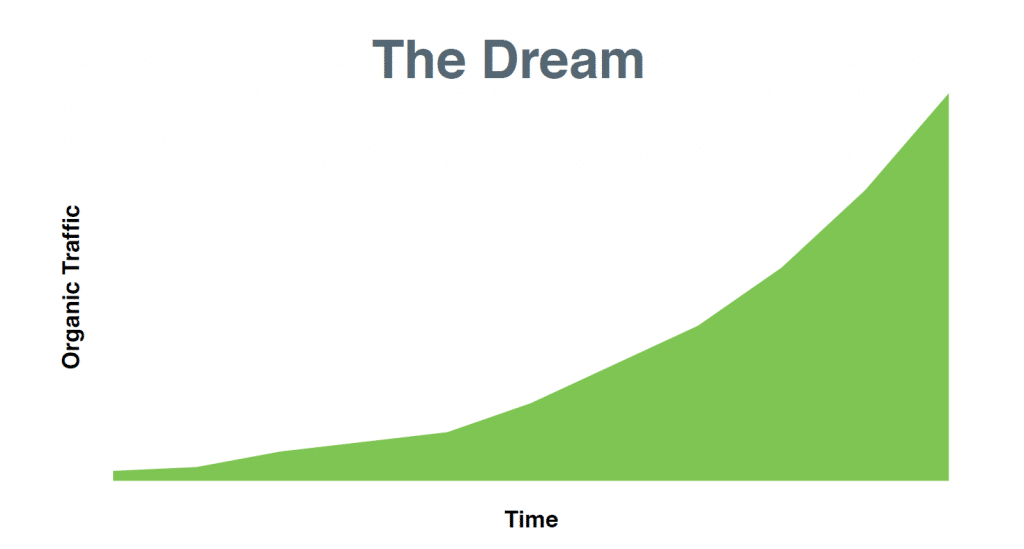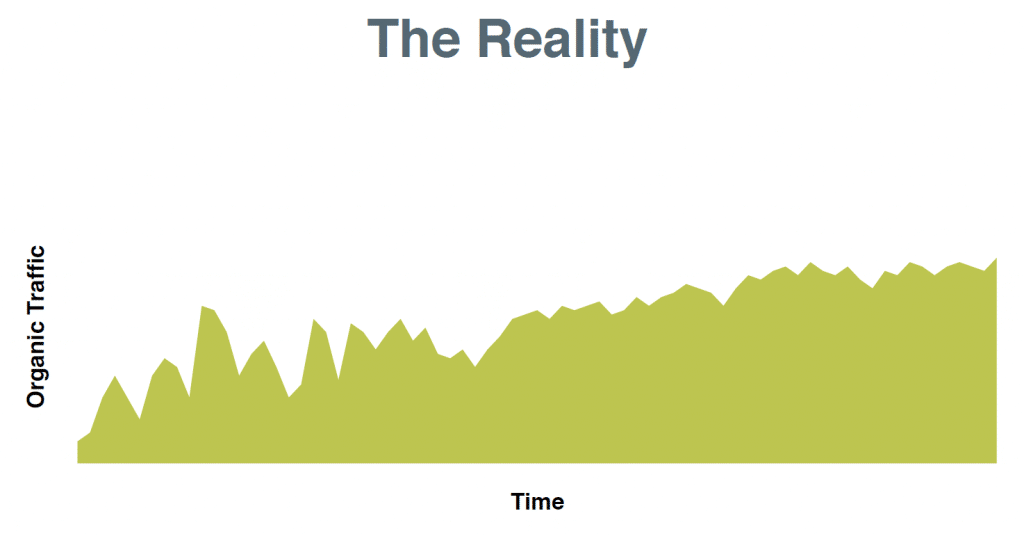One of the more popular talks I went to at INBOUND2017, was this “Here’s Why You Don’t Rank in Google” – the room was packed. And why wouldn’t it be? There are many articles, case studies and a lot of content around highly successful SEO campaigns. The issue is that it is difficult to understand what you can realistically expect from an organic search campaign. Sifting through the hundreds of ‘How to’ guides quickly leads you into a worm hole of contradictions and hyperbole. This is why this talk resonated with me; it may not be revolutionary but it gave some useful, real life examples.
It’s important to realise that SEO isn’t an exact science. It is certainly unpredictable – the reason being, you are not in control of all the different variables you’d need to be in control of to see predictable results. No one can say for 100% that they will rank at no 1 for everything they go after.
Using Google Keyword Planner is a great place to start when launching a new campaign to determine how many people are searching for your term, but bear in when working out an approximate click through rate, other factors can bring this figure down. Things like seasonal trends can affect this, as well as ads being presented for your search term as well as ‘images’ and potentially ‘shopping’ – these things all eat in to your search traffic. So, where you started confident that you would see a steady rise in traffic, the reality is, it’s really difficult to predict what you get from SEO.
SEO is tough – if it was easy, everyone would be ranking at number 1, and it’s only going to get tougher!
‘The Dream’ – Organic traffic goes up over time and results in high ROI/ lots of money
‘The Reality’ – peaks and troughs SEO isn’t an exact science and is prone to being unpredictable
Above: example case and indicative of an SEO campaign – steady incremental growth with dips and curves. Potentially plateau at start of the campaign and first 6 months can appear flat, but stick with it and with your strategy and you should see incremental growth.
SEO is really difficult; the most important thing you can do is to not just have a standard set of tactics you rely on, but understand why things happen and be able to diagnose problems quickly. Take a step back and understand where the problem is. SEO is 90% understanding what went wrong and 10% going in and providing a solution.
One of the most misdiagnosed problems in SEO is around issues related to authority vs relevancy and discovery – 3 fundamentally different things:
Crawling issues affect Discovery – About going and finding things online
Indexing issues affect Relevancy – Categorising the content, purely looking at what the content is about
Ranking highly related to Authority – Why should these two pieces of content talking about the same subject, rank one above the other?
Most SEO campaigns begin in the wrong way – with a significant bulk of content creation, which continues to increase over time. The problem with this? ‘Let’s just do double!’ doesn’t work. The issue is not the volume of content, the issue is that you don’t have the authority. One of the most important things for a new website/ campaign is to build authority – most often, by creating backlinks. By building authority to the point where you start to see traction, Google will also start to see that the content you are creating is trustworthy enough to rank above other content. Eventually you will hit a point where you will see more of your content ranking higher – this is when you can start increasing the volume! HubSpot kindly volunteered a few real-life examples of how they themselves encountered and solved these different issues:
Crawling-Discovery:
HubSpot did an overhaul of their content library – Their marketing library housed tones of different content offers, tons of backlinks but was not providing any negligible SEO traffic. Their first thought was that they needed to build more links – this was not the problem. Their second thought? What if it was a crawling issue. So, they crawled the pages to see what Google was seeing. What came back was a single book icon – the page had been built by wrapping everything in JavaScript and Google couldn’t crawl it. If Google can’t crawl your content it cannot index or rank it. HubSpot re-built the whole content library using basic HTML meaning Google could crawl it. After this, they saw an increase of 50k visits per month. A simple fix and back linking would not have fixed this issue!
Indexing-Relevancy:
Another example from HubSpot: they noticed that Google was removing the featured snippet for some of the blog posts they were trying to rank for, but at the same time, increasing the prevalence of featured snippets generally. Over 50% of content had a featured snippet showing around keywords they were ranking for. HubSpot were losing out on them but didn’t understand why as they have a highly authoritative domain and lots of backlinks! Looking into the problem, they found that they were being outranked by lower authority domains. So, they took look at the competition and found that time and again Wikipedia. So, what can we learn from Wikipedia, what are they doing right? For one thing, all their pages follow the same uniform structure. By doing so, Google can easily go in and crawl their pages and know they will find. By replicating this structure, they hoped to win some of the featured snippets! So how did they do it? They took blog posts where they didn’t rank and built a featured snippet-esk modules into their posts – to replicate what the feature snippet would look like to the search engine:
This produced a 10% increase in owned featured snippets within 24 hours. Something else to consider is increasing the relevancy of what Google wants for the query you are trying to rank for. Content clusters can help with this (don’t know what a content cluster is? Read about it {{here}}) – something widely spoken about at Inbound. Building and interlinking between relevant topics is key to creating strong and highly relevant content clusters. This strong internal linking also serves as a way to pass authority across the website by ‘piggy-backing’ off content that already has a lot of existing authority.
Ranking-Authority:
Authority is the hardest part! Building credible backlinks play a big part here. Building authority is also significantly affected by the other two components discussed above. After a demonstration of a marketing campaign that nosedived, the speaker then explained how he had turned this around and learnt from his mistakes. To simplify, these are the components to focus on:
- Ensuring there is a clear demand for the information – Having a clear demand for information when you’re building out projects which are focused around people linking too you, is incredibly important. Why would anyone link to you if there is no demand for what you’re offering?
- Making sure the timing is right – I guess this sits hand in hand with the above. Executing a campaign too late is going to cost you. As is trying to beat everyone else to it by executing a campaign too early before the need for the information has really had time to develop. Spotting a trend and knowing how and when to jump in, is a great skill to master.
- Creating a simple and intuitive UX – However simple or complex your content it, ease of use and quick access to the information is key to heighten your chance of building backlinks – after all, convoluted and complicated UX just doesn’t wash with today’s time sparse audience.
Nine out of ten times for a link building campaign, things don’t pan out as you want them but adhering to these things will help significantly. SEO is about knowing which levers to pull and when!
Author
-
Fiona joins Napier as a Marketing Specialist coming from a creative background in video & photography. Fiona has extensive experience in customer service having worked in the financial services sector prior to joining Napier.
View all posts


